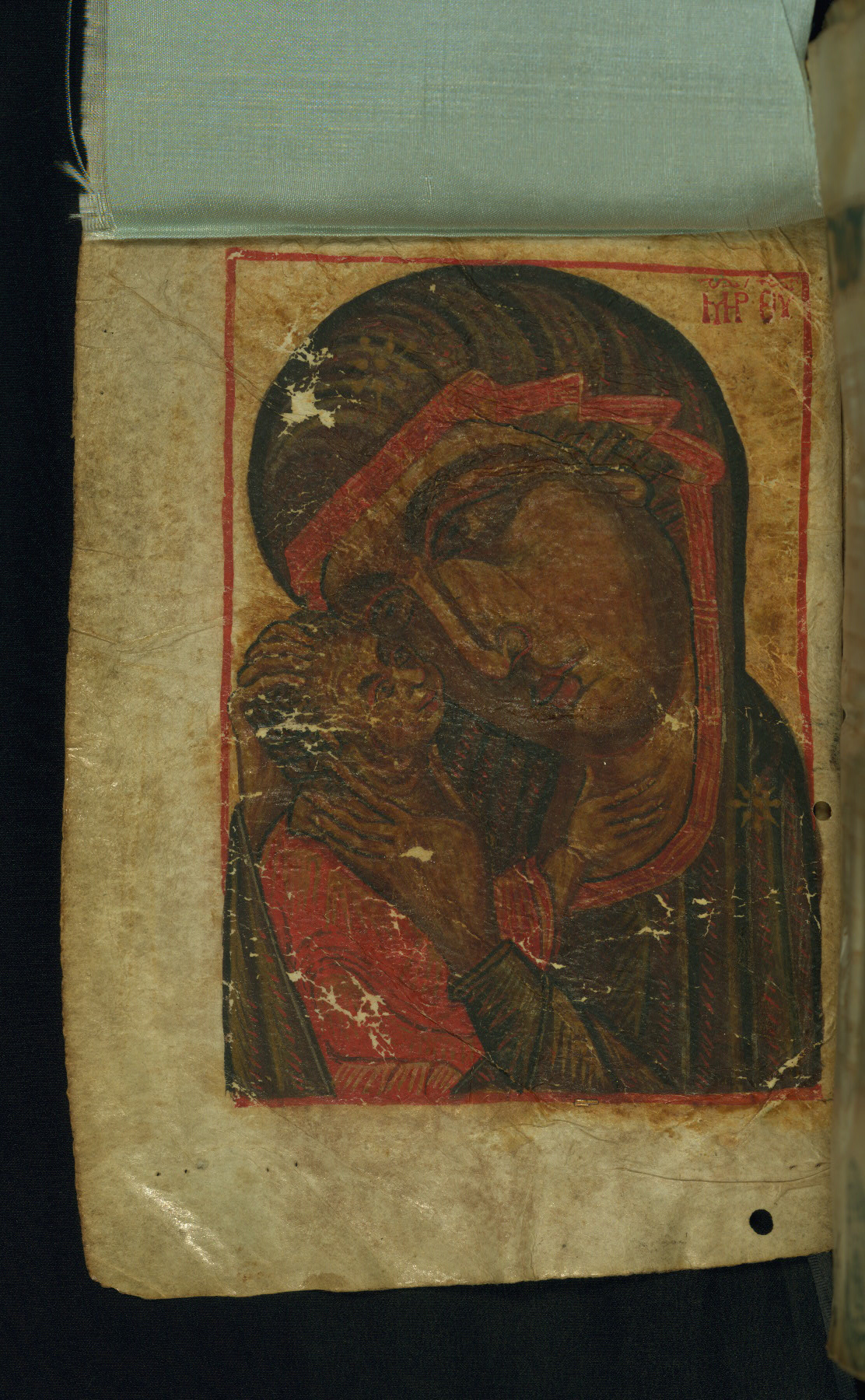Leaf from Gospels: the Virgin and Child
(Manuscripts and Rare Books)
This volume is primarily remarkable for its excellently preserved early (but not original) binding, as well as the peculiar style of its miniatures. The manuscript opens with an unusual, icon-like prefatory image of the Virgin and Child, possibly added at an early stage for use in private devotion, and is followed by Evangelist portraits facing ornate headpieces. In style, the image is similar to an icon at the Benaki Museum in Athens (inv. 41420) and may, like it, date to the fourteenth century. This is a very unusual subject for a pictorial frontispiece to a Gospel Book, and must have served as a devotional image. This, along with the other illuminations in the manuscript, are important examples of non-Constantinopolitan Byzantine art.
Provenance
Provenance (from the French provenir, 'to come from/forth') is the chronology of the ownership, custody, or location of a historical object. Learn more about provenance at the Walters.
Sophia Negroponte, Constantinople [1]. Purchased by the Russian Skete of St. Andrew, Karies, Mt. Athos, 1900 [2]. Purchased by Thomas Whittemore, Paris, after 1902. Purchased by Henry Walters, Baltimore; by bequest to Walters Art Museum, 1931.
[1] Seen by A. Papadopoulos-Kerameus in 1885
[2] Cod. 754 in its library; seen there by C. R. Gregory on March 26, 1902
Exhibitions
| 1999-2000 | Eureka! The Archimedes Palimpsest. The Walters Art Gallery, Baltimore; The Field Museum, Chicago. |
| 1947 | Early Christian and Byzantine Art. Baltimore Museum of Art, Baltimore. |
Geographies
Byzantine Empire (Place of Origin)
Measurements
Folio H: 6 5/8 × W: 4 5/16 in. (16.8 × 11 cm)
Credit Line
Acquired by Henry Walters
Location in Museum
Not on view
Accession Number
In libraries, galleries, museums, and archives, an accession number is a unique identifier assigned to each object in the collection.
In libraries, galleries, museums, and archives, an accession number is a unique identifier assigned to each object in the collection.
W.526.1V



